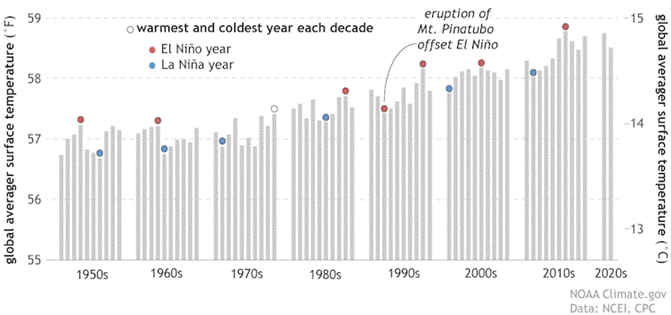Market Update
New England Futures Electricity Prices Summary
Published: April 15, 2024
As we look ahead to the winter of 2024-2025, understanding the factors influencing energy costs and weather patterns is crucial for effective planning. In recent years, the Northeast has experienced relatively mild winters, largely influenced by the El Niño and La Niña phases of the El Niño Southern Oscillation (ENSO). However, as we transition into a weak El Niño phase and eventually into La Niña, there are indications of a potentially colder winter ahead. This article explores the insights on energy costs and weather patterns, providing valuable information for preparing for the upcoming season.
Understanding ENSO and Its Impact
For the past few winters in New England and the Northeast, we have experienced relatively mild weather. This pattern has been influenced by La Niña and El Niño, two specific states of the El Niño Southern Oscillation (ENSO). Warmer than average temperatures signify an El Niño period, while lower than average temperatures indicate La Niña.
Transitioning Weather Patterns
This past winter, we experienced a particularly strong El Niño phase, which persisted from early winter through most of the season. Strong El Niño phases are known for causing fewer prolonged cold outbreaks, more volatile temperature movements, and an increase in coastal rain events rather than snowfall. As we transition into Spring 2024, we anticipate a rapid drop in sea surface temperature anomalies, indicating a shift towards a moderate, and eventually weak El Niño phase. This phase typically brings productive snowfall to the Northeast, as evidenced by recent snow events in northern New England. Following this, we will move into a neutral phase for late spring and early summer before transitioning into La Niña in the heart of summer.
Looking Ahead to La Niña
It is expected that we will remain in La Niña from Summer 2024 through the upcoming winter season, leveling off near a moderate to weak phase in the heart of the upcoming winter. One interesting fact is that the coldest year globally in each decade since the 1950s (when record keeping of the ENSO cycles began) has mostly been while we were in a La Niña phase.
Global Surface Temperature Each Year Since the 1950s

The chart below illustrates the historical occurrences of triple-dip La Niña events. While triple-dips are rare, the Climate Prediction Center has issued an official La Niña watch, indicating a greater than fifty percent chance of La Niña impacting the upcoming winter season. This watch underscores the rapid changes in oceanic and atmospheric patterns that have prompted NOAA to anticipate the emergence of La Niña, which is expected to bring significant weather impacts worldwide in the second half of the year and particularly during the next winter across the Northern Hemisphere.

Preparing for Energy Price Fluctuations
Although we recognize that long range weather forecasts are not definitive, in addition to the potential of a colder winter than we have seen in the past two or three strictly based on normal fluctuations year to year, there are several factors that lead us to believe that contracting sooner rather than later is advisable:
- Natural gas prompt prices fell below the $2 mark in early February and have remained there since. $2 natural gas is rare and historically very short-lived.
- Electricity future prices reached a low point in early February as well and have increased steadily for the past six weeks in a row.
- The natural gas supply is expected to remain flat, with demand projected to increase over the next two to three years.
Stay informed about energy trends and how they may impact your organization. Contact the team at Freedom Energy to learn more about how you can prepare for the upcoming winter season and mitigate risks associated with energy price fluctuations.
Meet the Writer

Howard Plante
Freedom Energy Logistics
Vice President of Procurement
Howard Plante is a seasoned professional in the energy industry with a comprehensive background in environmental and energy engineering. As Vice President of Procurement at Freedom Energy Logistics, he brings a wealth of experience in regulatory compliance, technical analysis, and strategic planning to his role, where he is dedicated to advocating for clients and advancing the company’s enterprise efforts on their behalf. Click here to read Howard’s full bio.









Connect With Us